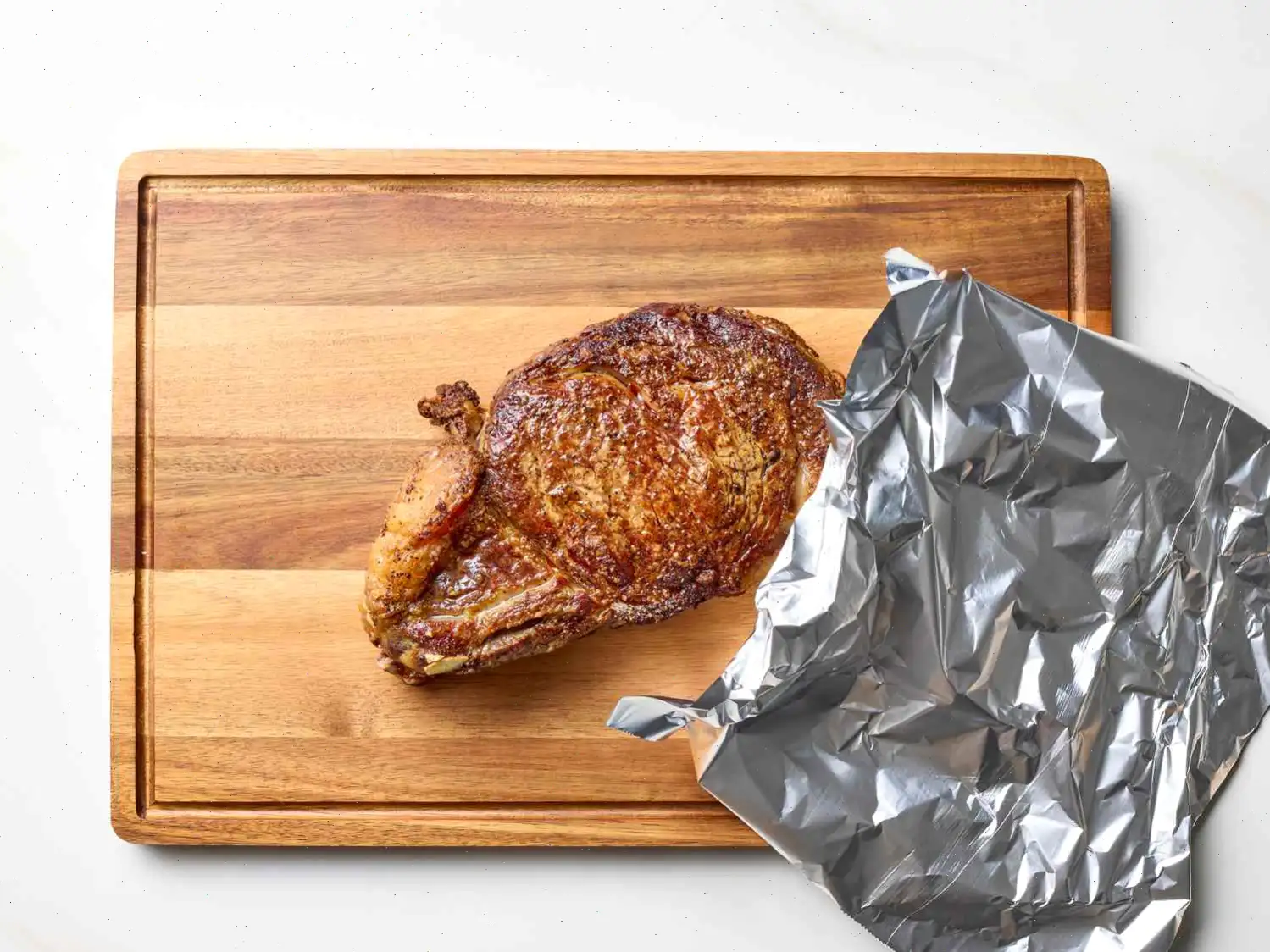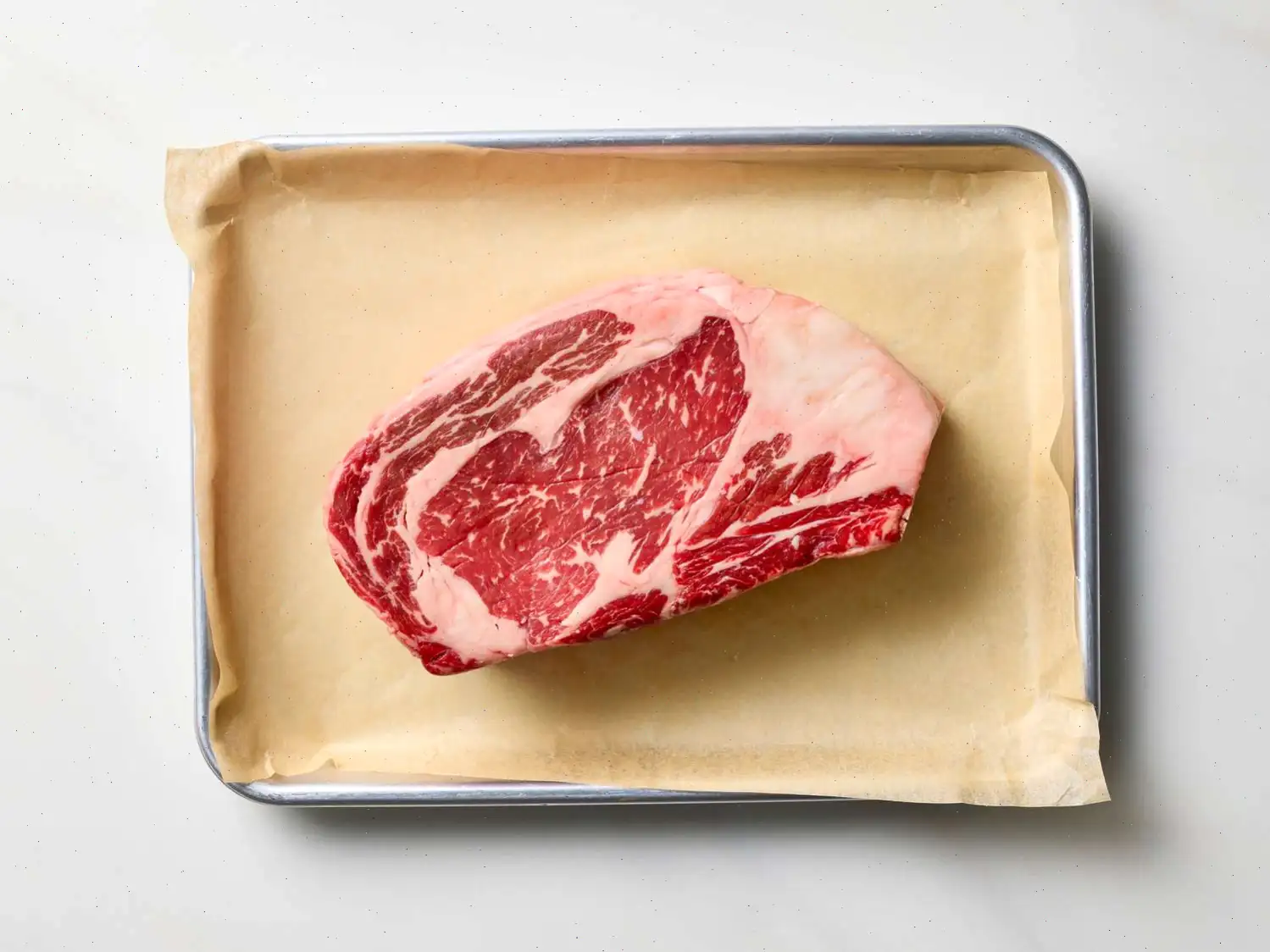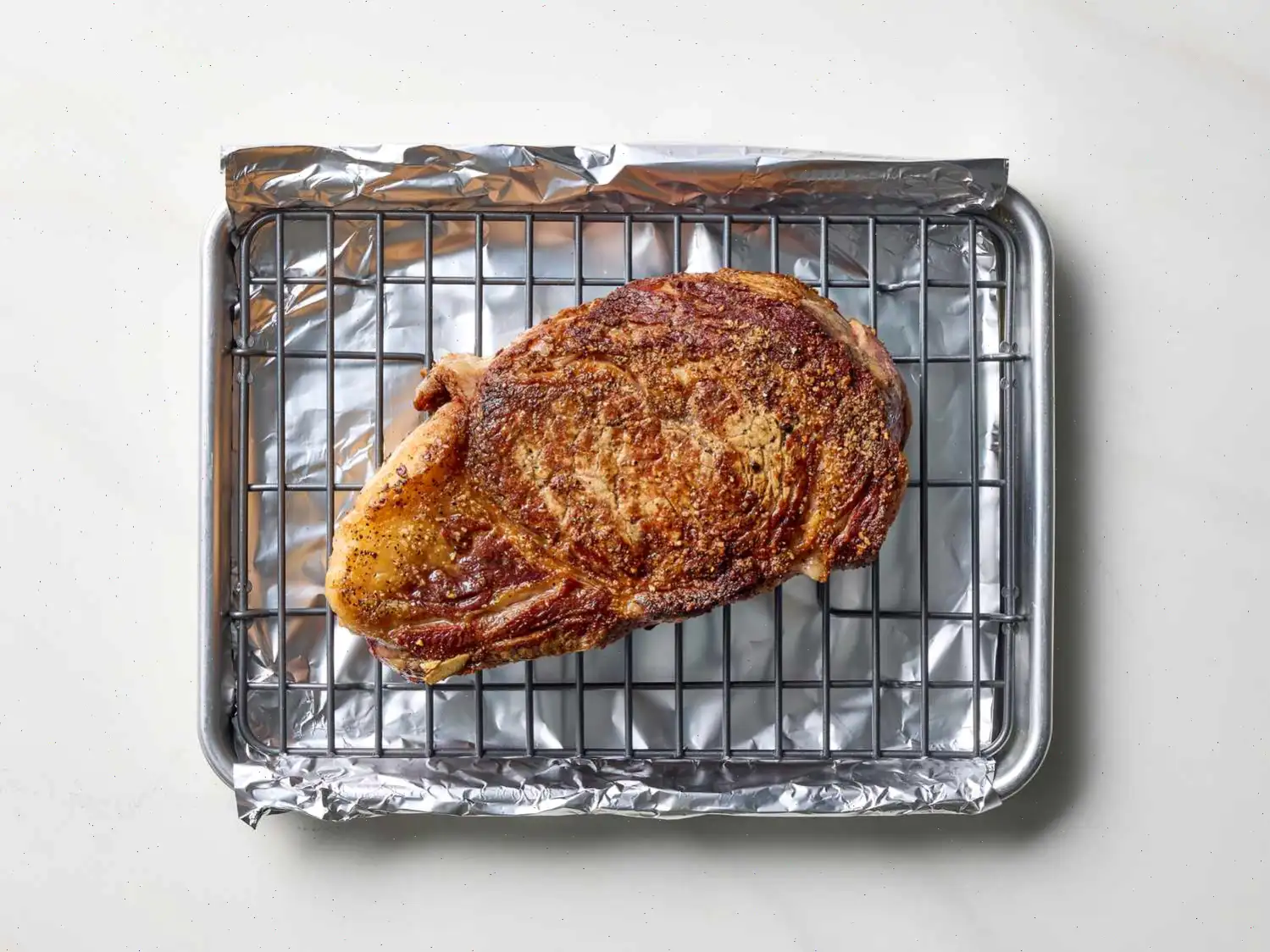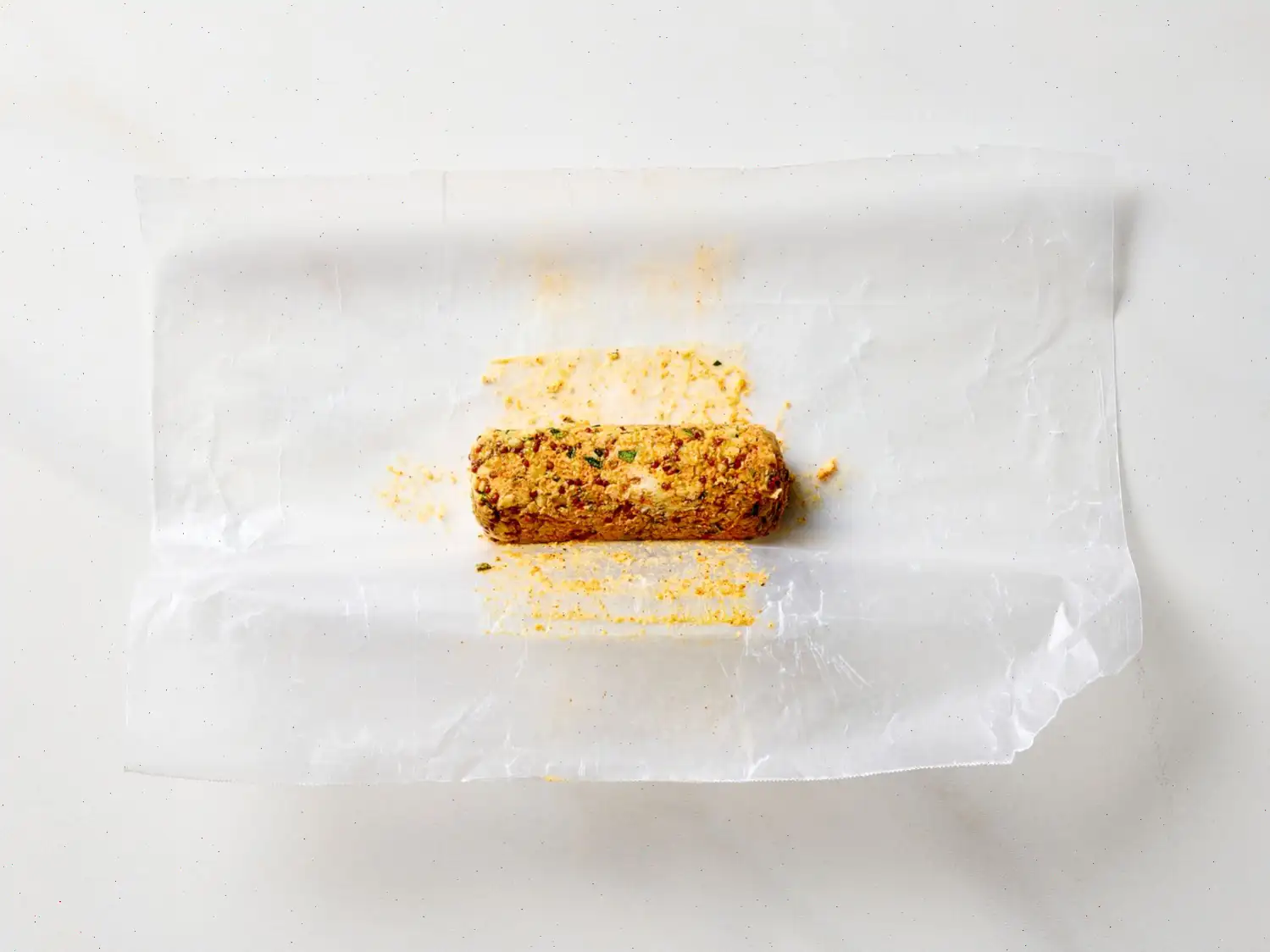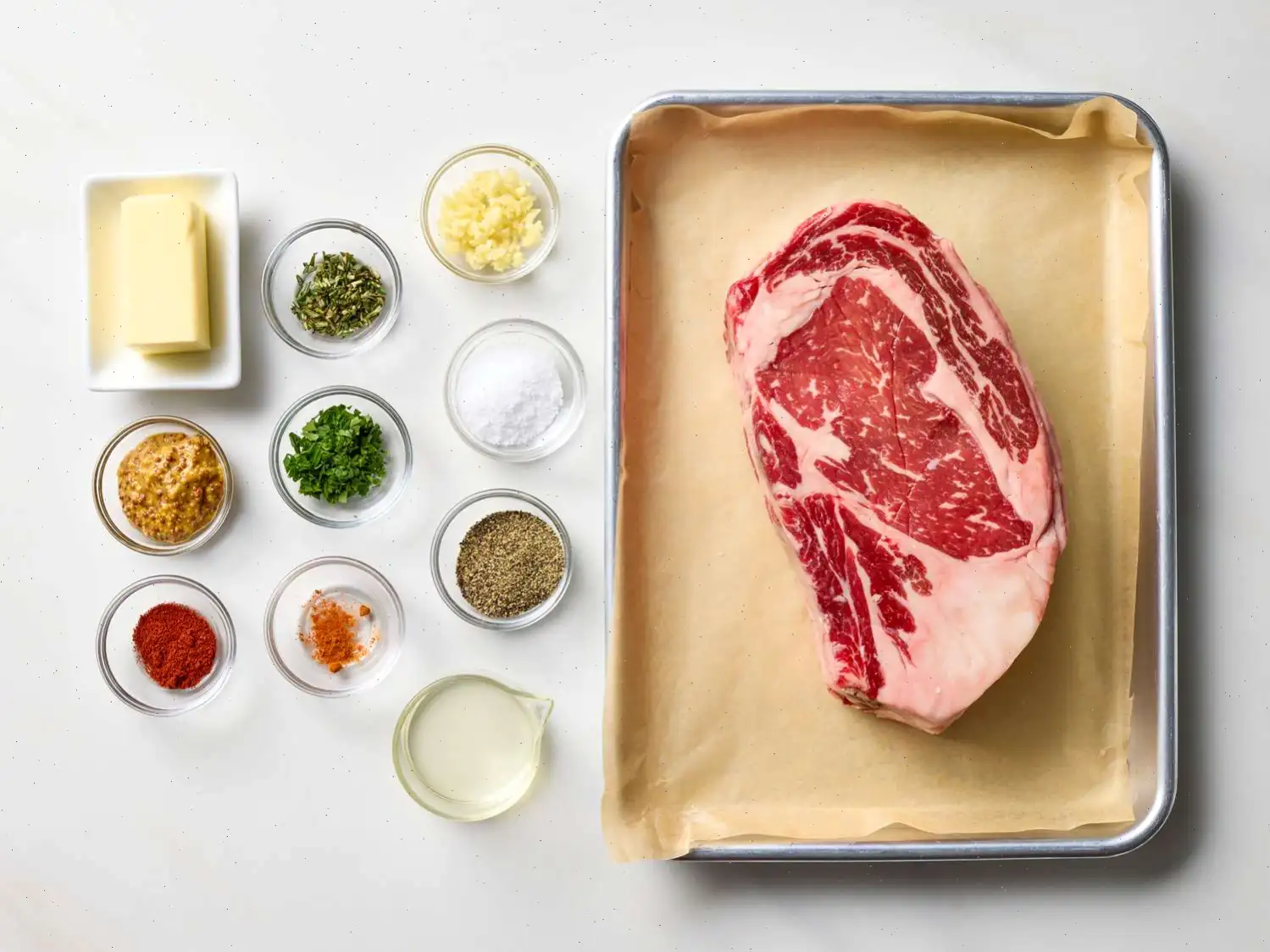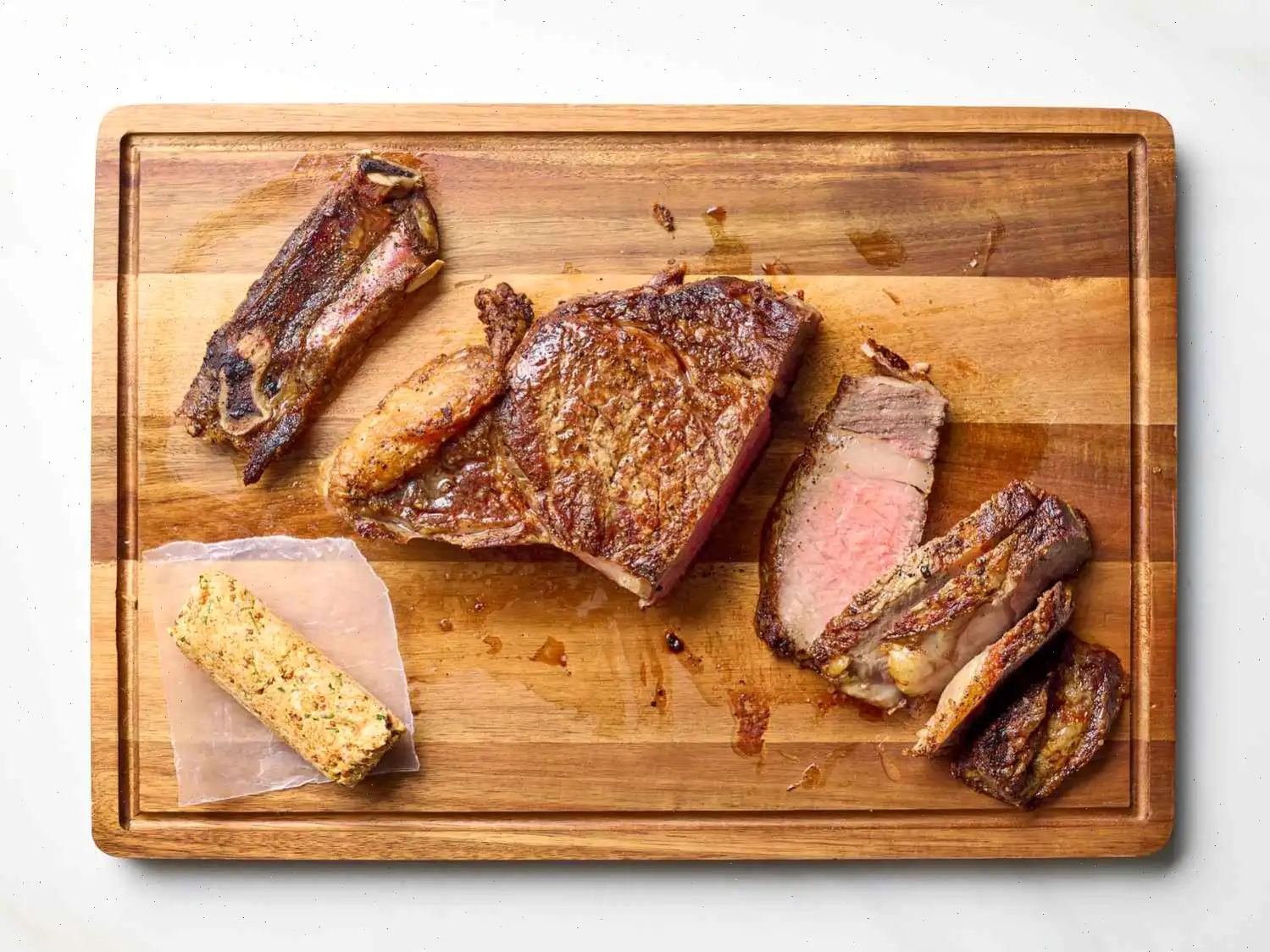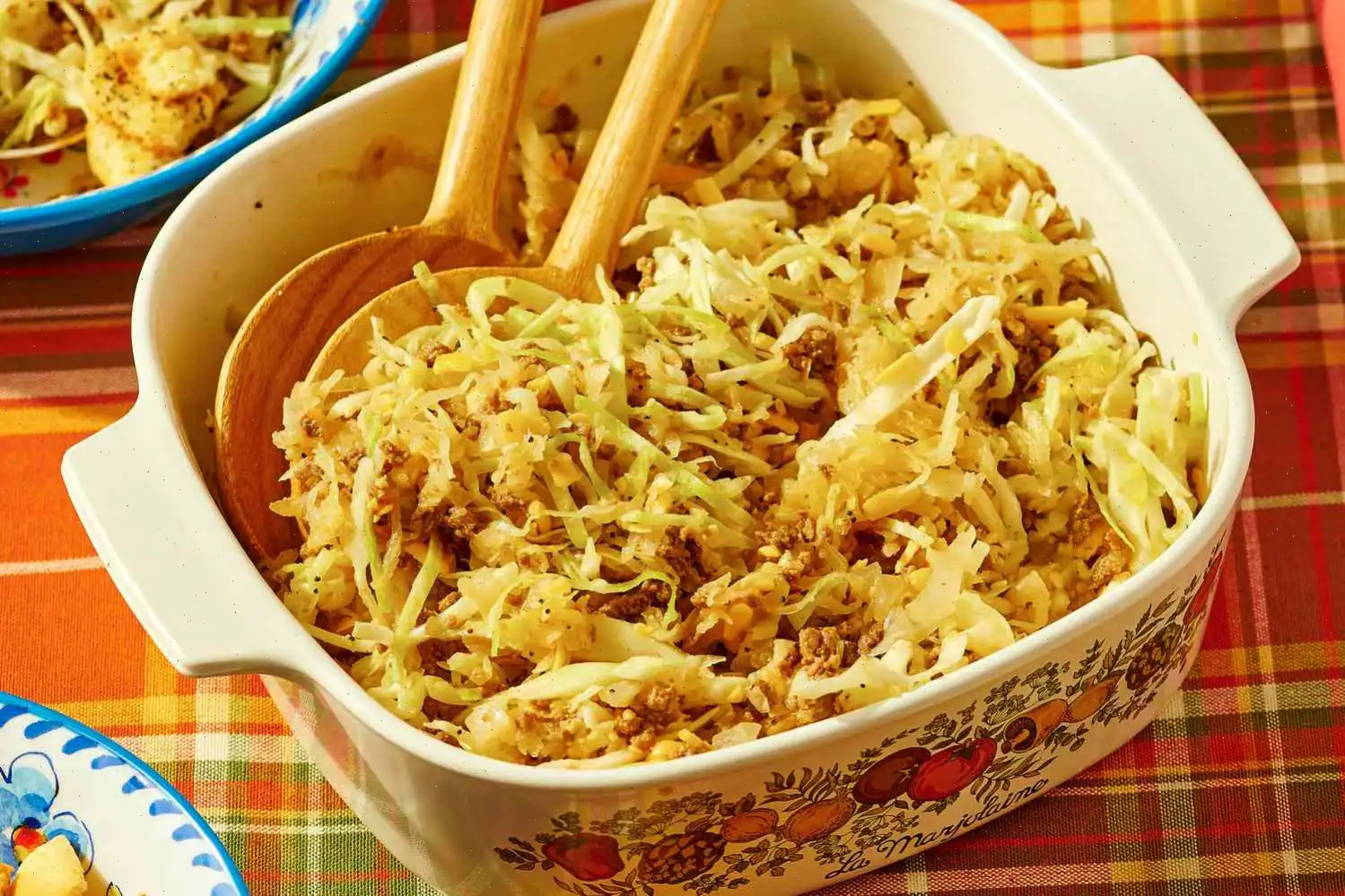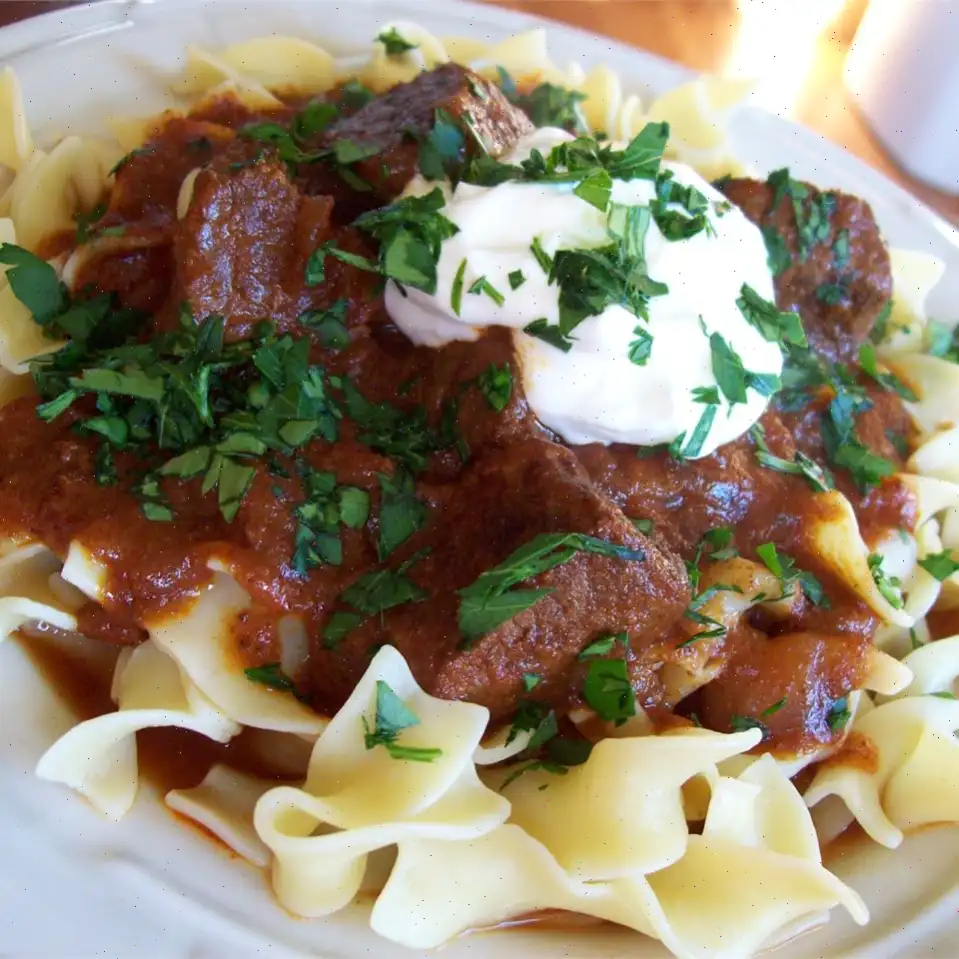
Cowboy Steak Recipe
Ingredients
Cowboy Compound Butter:
- 1/4 cup salted butter, softened
- 2 teaspoons minced fresh parsley
- 1 teaspoon stone ground Dijon mustard
- 1 teaspoon minced fresh rosemary
- 1/2 teaspoon smoked paprika
- 1 clove garlic, minced
- 1 pinch cayenne pepper
Cowboy Steak:
- 1 (2 1/2-inch-thick) beef cowboy steak (bone-in ribeye), 2 1/2 to 2 3/4 pounds
- 1 tablespoon vegetable oil
- 1 tablespoon kosher salt
- 1 tablespoon freshly ground black pepper
Directions
Step 1: Gather all ingredients.
Step 2: For the compound butter, combine the softened butter, parsley, mustard, rosemary, smoked paprika, garlic, and cayenne pepper in a small bowl. Mix well until fully combined.
Step 3: Spoon the compound butter mixture onto a sheet of waxed paper. Roll it into a log shape and wrap it tightly in the waxed paper. Chill in the refrigerator for at least 30 minutes, or up to a week, until firm.
Step 4: While the compound butter is chilling, prepare the steak. Let the cowboy steak stand at room temperature for 45 minutes to ensure even cooking.
Step 5: Preheat the oven to 400F (200C). Place a wire rack inside a foil-lined rimmed baking sheet.
Step 6: Heat vegetable oil in a 12-inch cast iron skillet over medium-high heat until it begins to smoke. Season the steak generously with kosher salt and freshly ground black pepper on both sides.
Step 7: Sear the steak in the hot skillet for 5 minutes on each side until well-browned. Then, sear the fat cap side for an additional 2 minutes to achieve a crispy exterior.
Step 8: Transfer the steak onto the wire rack in the prepared baking sheet.
Step 9: Roast the steak in the oven for 45 minutes or until an instant-read thermometer inserted into the center of the steak registers 135F (57C) for medium-rare or 150F (65C) for medium.
Step 10: Once done, remove the steak from the oven and place it on a cutting board. Tent the steak loosely with foil and let it rest for 10 minutes. The temperature will continue to rise as it rests.
Step 11: After resting, slice the steak between the meat and the bone to separate the bone from the steak. Then, thinly slice the meat across the grain.
Step 12: Top the sliced steak with the chilled Cowboy Compound Butter and serve immediately.
Nutrition Facts (per serving)
- Calories: 907
- Fat: 69g (88% Daily Value)
- Saturated Fat: 31g (157% Daily Value)
- Cholesterol: 252mg (84% Daily Value)
- Sodium: 1234mg (54% Daily Value)
- Total Carbohydrates: 2g (1% Daily Value)
- Dietary Fiber: 1g (2% Daily Value)
- Protein: 71g (142% Daily Value)
- Vitamin C: 1mg (1% Daily Value)
- Calcium: 49mg (4% Daily Value)
- Iron: 7mg (39% Daily Value)
- Potassium: 831mg (18% Daily Value)

History and Origins
The Cowboy Steak traces its roots to the cattle-driving era of the American West, when cowboys relied on hearty, protein-rich meals cooked over open fires. As ribeye cuts became more accessible, this oversized, bone-in steak evolved into a symbol of rugged outdoor cooking. Its signature handlethe long rib bonewas not only practical for open-flame grilling, but also became a visual hallmark that set it apart from other classic beef cuts. Over time, the steak moved from ranch camps to urban steakhouses, maintaining the same spirit of bold, rustic flavor.
Regional Characteristics
In Texas, the Cowboy Steak is often cooked directly over mesquite wood, lending a smoky intensity that reflects local barbecue traditions. In the Midwest, chefs tend to favor cast-iron searing to highlight the buttery richness of the ribeye. Western mountain regions occasionally season the steak with local herbs such as sage, integrating regional aromatics into the crust. Despite these variations, each region shares an appreciation for the steak's substantial size and its unmistakable, beef-forward profile.
How It Differs From Similar Dishes
While the Cowboy Steak is sometimes confused with the Tomahawk steak, the two are distinct. The Cowboy Steak retains a shorter, trimmed bone, making it easier to handle and quicker to cook, whereas the Tomahawk includes an extended, frenched rib bone for dramatic presentation. Compared to a traditional ribeye, the Cowboy Steak is significantly thicker, allowing for a deeper sear and a more pronounced gradient from crust to center. This thickness creates a texture and flavor concentration that leaner cuts simply cant replicate.
Where It Is Commonly Served
Today, Cowboy Steak is featured in high-end steakhouses, ranch-themed restaurants, and outdoor grilling events across the United States. It is especially popular at celebrations, weekend cookouts, and gatherings where dramatic presentation is welcomed. Some establishments offer it as a shareable entre, reflecting its generous weight and visually striking form.
Interesting Facts
The Cowboy Steak is often considered the king of ribeye cuts due to its size and marbling. Its natural fat distribution makes it one of the few steaks that remains tender even when cooked over intense heat. Many culinary historians note that early versions were cooked directly on coals, a technique still embraced by adventurous grillers. The steaks name is also said to reference its practicality: cowboys could hold the bone like a handle while eating without utensils, making it ideal for life on the trail.
FAQ about Cowboy Steak Recipe
Comments
Jonathan Mitchell
03/25/2025 01:48:04 AM
I absolutely enjoyed every delicious bite of this dish... in my imagination. Unfortunately, I don't have the means to purchase a 2 1/2 lb bone-in ribeye steak in today's food market. It's a bit disheartening, as I remember the days when I used to cook a whole bone-in rib roast for my family on Christmas Eve. Organic eggs are nearly $18.00 for a dozen in my area. Nonetheless, thank you for sharing the recipe! The compound butter was a highlight for me, even if I could only savor it in my thoughts!


